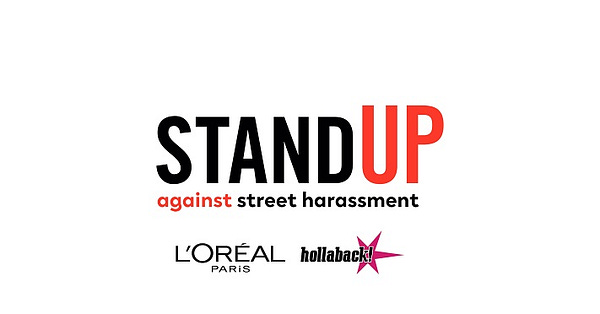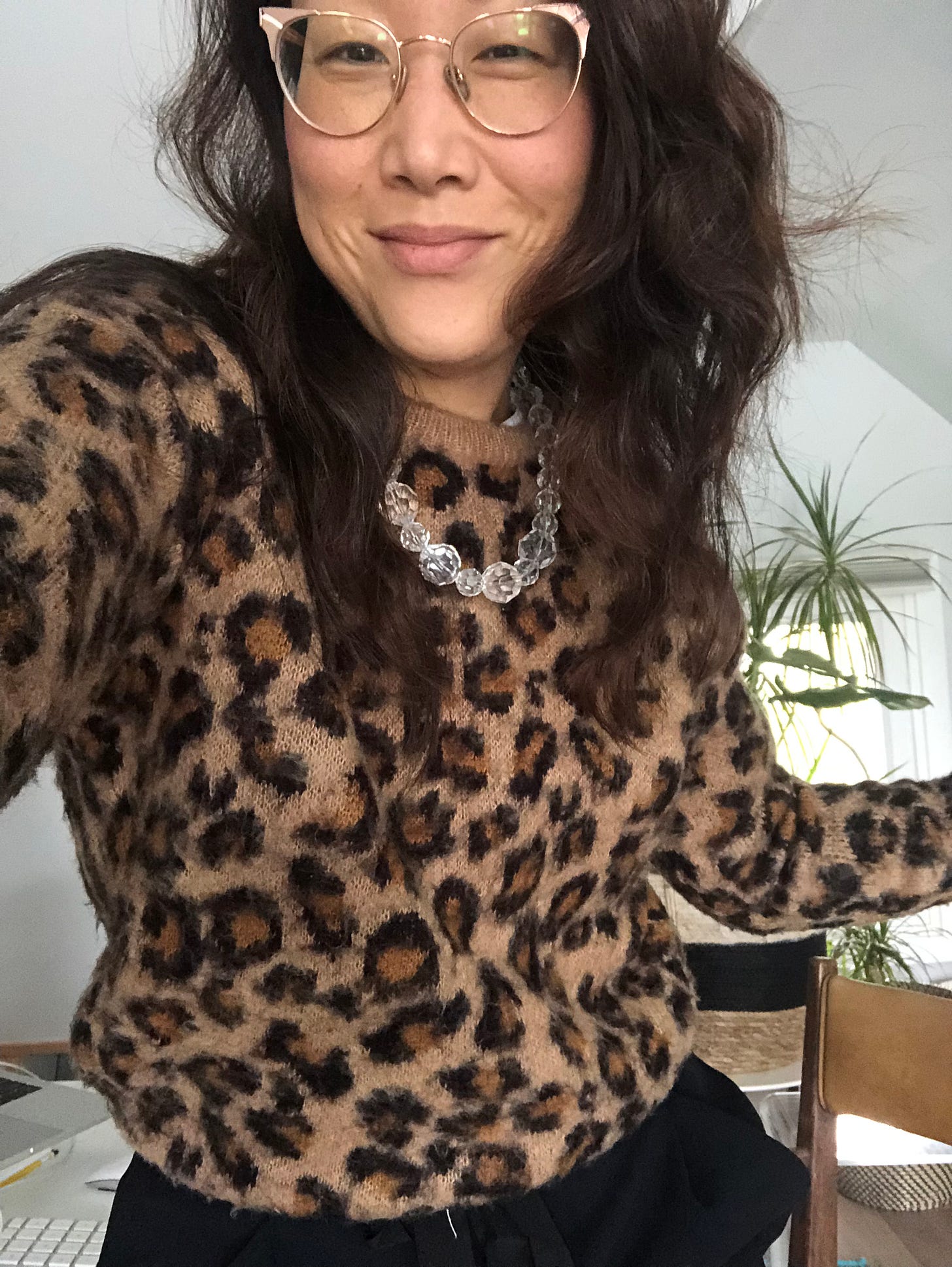Welcome to At The End Of the Day. I’m Hannah Sung and I write this newsletter for a people-first perspective on the news. If you think today’s newsletter is useful, forward it to a friend.
Content warning: Today’s newsletter mentions sexual assault
This week, a news story got my friends talking.
A woman was raped on a subway in Philadelphia while other passengers were there. Police said that no one intervened.1 And then I saw this Tweet.


Julie Lalonde is an author, women’s rights advocate and public educator based in Ottawa, Canada and teaches bystander intervention.
I got in touch with Julie to ask her to share with me, and therefore you, what we can do when we witness violence in public.
Julie Lalonde
What is the bystander effect?
HS: Let’s start by defining the bystander effect.
JL: The bystander effect is a phenomenon where a group of people witness something, whether it's a medical emergency or harassment, and we all freeze and think, Someone else is going to do something. We diffuse the responsibility to other people, or we see that no one is acting, and think, Okay, I guess there's nothing I need to do here. And then the moment passes and we realize, Oh, damn, none of us did anything.
HS: Do you have any insight into why we respond that way?
JL: Well, the complexity for me around the bystander effect is that it's real but it's also dependent on a myriad of intersectional factors. We know that with sexual violence, for example, many people don’t intervene because they think the person had it coming. You know, “If you just weren't dressed that way, and if you hadn't been flirting.”
We know that white people are less likely to intervene if the victim is a person of colour. We know men are less likely to intervene if they know the perpetrator, rather than if it's a stranger. 2
And I think fundamentally, it's about a lack of empathy. We’re not socialized to have empathy for anyone who is in crisis, regardless of whether they look like us, or frankly, are making decisions that we would not make ourselves make, like being too intoxicated or dressing a certain way. All of those factors contribute to this idea that this is someone else's problem.
HS: Can you tell me how your training works?
JL: We call it the five D’s of intervention: Distract, Delay, Delegate, Document and Direct.
And if you don't remember all five D’s, my message is always to think beyond “direct.” People think that bystander intervention amounts to, “If I see Julie being harassed, I'm going to go toe-to-toe with her harasser.” That's scary and confrontational and so most people think, Oh, if that's my only option, I'm not going to do anything at all.
The Five D’s of Intervention
Distract
Creating a distraction breaks the contact between the harasser and the target. It could be stumbling, falling, dropping something. But it could also be striking up a conversation with the person who's being targeted, asking them for directions.
Delay
If it feels way too scary to intervene in the moment, or it was a fleeting moment and you couldn't step in, delay. Check in with the person that was targeted, ask if they're okay, ask if you can help them, if they need you to walk them somewhere, if they need to borrow your phone to call someone.
Document
You can also document. That's when you collect some sort of evidence that you then put in the hands of the target. Whether it's taking a picture of the perpetrator, taking a short video, not to stream online, but to put in the hands of the target, for them to decide what they want to do with it.
Delegate
You can delegate to a person of authority, alerting the transit operator or delegating to another bystander. Ask someone else standing nearby to help you: “Do you see this? Should we do something?”
Direct
Direct is two steps: Set a boundary with the harasser and then turn right away to the target and assist them in whatever way you can. We don't want a back and forth between the harasser and you as a bystander because that's how things tend to escalate.

“We’re trying to de-escalate situations”
HS: When you do your training in a Zoom class, do stories come out from the participants of experiences they've had in their own lives?
JL: Absolutely. I have the privilege of working with people from all walks of life, all ages, all genders, all backgrounds. I've trained Girl Guides and I've trained parliamentarians. It's so fascinating how the common responses come up time and again.
People are scared. People are really fundamentally torn between wanting to help that person and wanting to keep themselves safe. And it's really beautiful to see people realizing, Oh, I don't have to choose, I can do both. I can keep myself safe and still make sure that people feel seen in the community.
HS: This week, there was the news story about the rape on the subway in the U.S. and bystanders didn’t help the victim. People were horrified by that story. Your takeaway on Twitter was that it's not surprising, that this kind of thing happens all the time.
JL: Absolutely. I was jumped by this guy on the bus and he put his hands down my dress and people just stood around shocked. A friend of mine, a man openly masturbated in front of her on the bus. And people just looked away. These things happen all the time. Public transit in particular is really dangerous for women and people of colour and people with disabilities.
And so really, it's shocking when it does make the news.
To me, it proves that just talking about violence against women hasn't solved the problem. Raising awareness is not the same thing as social change. You have to give people tools.
HS: Your framework of the five D’s is great. Are they in any order?
JL: No. What's interesting is that during the training, we ask people, Which is the one that speaks to you the most? And across the board, it's “distract.”
HS: I agree, “distract” is my favourite tactic. It makes me think of a time that I was on public transit in Paris. A pickpocket dropped something loud in order to distract everyone and then robbed a tourist on the subway. If you can use distraction like that, you should be able to also use it as a tool for something positive.
JL: Absolutely. You're like the magician's assistant, right? You're like, Look over here! And then by doing that, you can get that person out of that situation safely.
It's very subtle. We're trying to de-escalate situations, not escalate.
HS: In the interest of being very concrete, can you give more examples of distractions?
JL: The two biggest categories of distraction are what I call being clumsy or being chatty. Stumbling, dropping something, spilling something, making some sort of commotion. It gives the target an opportunity to either help you up or take that split second to get off the bus and use that distraction as an advantage.
Secondly, being chatty. Act like someone who can't read the room, like you have no idea something awkward is going on. “So sorry, my phone is dead, do you know what time it is?”
I always recommend chatting with the target and not the harasser. But I also encourage men in particular to use their judgment. Approaching a woman they don't know might make her feel more uncomfortable. So maybe turning to the guy and saying, “Hey dude, do you have a light?”
There is a video that shows footage of a real thing that happened on the subway in New York where someone used distraction and it was a complete game-changer. 34
He just stands between two people and eats chips but he creates a barrier between the two people and then other people get involved because it breaks the tension.
One time, I was waiting for a cab near a bus stop where a woman was waiting and a bunch of dudes were hanging out of their car, just brutally street-harassing this woman. I walked towards her, turned my back to the car and said, “Hey, girl, how are you doing?” And she was like, “The worst.” I said, “We're gonna pretend that we're having an awesome conversation,” and the guys just grumbled and drove off. That’s all it took.
I didn’t think, Okay, I gotta teach a lesson to these creeps.
You look at so many of the horrific things we’ve seen over the past year and a half, from pulling off hijabs to spitting in the face of elderly Asian people. Of course they know what they’re doing is awful, that's the point!
So when people get caught up in saying, “It's my job to stop and educate them,” I say, “No, your job is to get that person safely out of that situation.”
HS: What I love about your story at the bus stop is that it was an ugly moment with these guys in the car but you ended up with a beautiful moment of connection for two people standing at a bus stop who would not have interacted otherwise.
JL: Absolutely. We know that, in terms of the neurobiology of trauma, it literally changes where that experience sits in your brain. We can blame ourselves, spiral into this, Coulda, shoulda woulda, Oh, it's my fault. But when someone confirms for us, saying, “That was legitimately not okay. And you had no role to play in that,” that's community care. That's so powerful. Just connect with that person. Make that person feel understood. If we all did that, it would make a world of difference. But we get so caught up in educating the harasser instead of focusing on the person being targeted. All of my energy should be put towards supporting that person.
Thank you, Julie, for a crash course that I think we all desperately need.
If you want to learn more about bystander training, or you know someone who does, share this and sign up for her online workshop. It’s free. And check out this PSA below.


I had a long, busy, challenging week, so I’m working on this newsletter later than usual. I eased up on my personal deadline and told myself it’s okay.
What I did do on Friday afternoon was make some time after an in-person work meeting to have an outdoor cup of tea with a friend. It was very necessary. We laughed ‘til we cried. I can’t even remember what was so funny now and I don’t care. I just remember wiping our eyes.
Hope you can blow off some steam (maybe even a personal deadline) yourself this weekend.
Thank you for reading,
Hannah
✨✨✨ At The End Of the Day is edited by Laura Hensley ✨✨✨
Hey! Want to tell me about yourself?
Yes, I’m talking to you! I’m looking to find out more about you so that I can continue to grow At The End Of the Day.
With the help of my editor, Laura, and a marketing collaborator, Frances, I’m looking to make this labour of love more sustainable.
We have a survey for you. Will you fill it out?
It should take 5 - 10 minutes of your time. I want to learn more about who you are, what resonates and why. You don’t have to put your name to this survey.
I plan to use this anonymized information for planning future newsletters (what would you like to see?) as well as marketing (communicating with potential collaborators and sponsors — I’m looking to grow revenue in order to compensate people fairly, myself included).
In the end, this feedback will help me as I look ahead to 2022 to figure out how to keep going and incorporate future goals. Thank you so much! — Hannah
At my desk on Friday — hiiii!
Would You Jump In to Stop an Assault? New York Times
'Snack Man' Talks About Heroic Act on Subway, Anderson Live
Have you heard?
Our latest episode of Strong and Free, a podcast we made at Media Girlfriends with Historica Canada, focuses on a Black enslaved woman named Marie-Joséphe Angèlique and a fire that burned down old Montreal in 1734.
Many Canadians might stop reading to ask — wait, slavery in Canada? Yes.
Listen to the episode to learn more.
Are you enjoying At The End Of the Day?
If you are enjoying this newsletter, there are a few ways you can support it!
✅ Forward this newsletter to a friend
✅ Share it on your socials
✅ Become a patron via Patreon and pay-what-you-wish
Thank you to everyone who is subscribed, reading, sharing and supporting this work!







